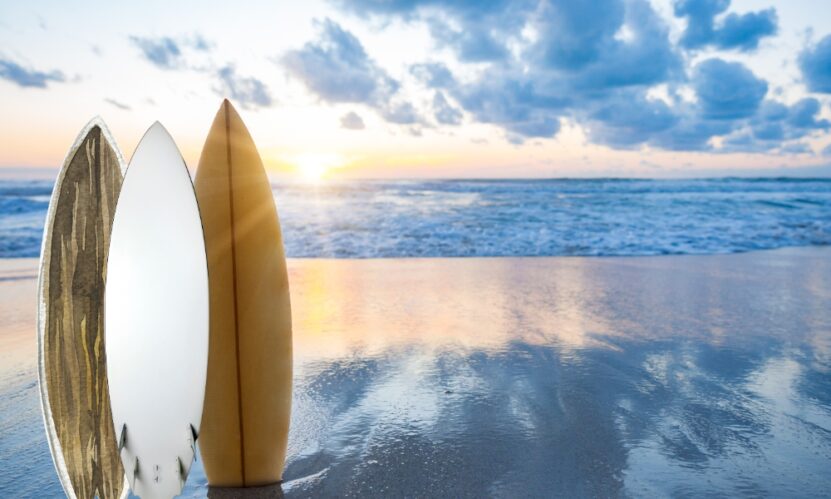We all understand the thrill of conquering the waves on a sunny day and the exhilaration of maneuvering the surfboard across the vast expanse of the ocean. Yet, one aspect remains puzzling to many – the choice of a surfboard’s size. This post is aimed at eliminating this confusion and enhancing your surfing experience. Let’s ride the wave!
The Basics of Surfboard Sizing
When we talk about the size of a surfboard, we primarily refer to its length, width, and thickness – together, these factors make up the board’s volume. The correct size of a surfboard is largely dependent on the rider’s weight, skill level, and the type of waves they plan to ride. Here’s a simplified breakdown:
- Length: It affects the speed at which the board paddles and catches waves. A longer board catches waves more easily but sacrifices maneuverability.
- Width: It impacts the stability of the surfboard. A wider board provides more balance but may be slower and less responsive.
- Thickness: It contributes to the buoyancy of the surfboard. A thicker board floats better, which can be useful for larger surfers or beginners.
Beginner Surfboard Sizes
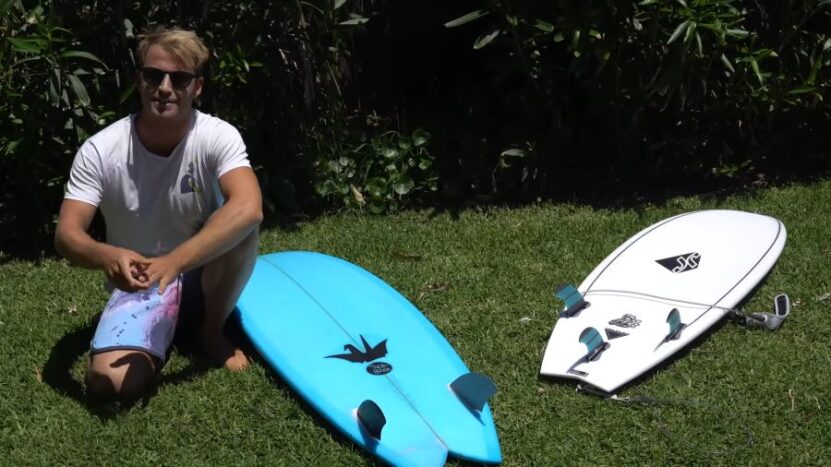
If you’re new to surfing, you’re best off with a larger, more stable surfboard. Larger boards, often ranging from 7 to 9 feet, offer greater stability and buoyancy, making it easier to catch waves and stand up. This doesn’t mean you should opt for the biggest board you can find, though – too large a board can be difficult to control.
A common rule of thumb is to start with a board that is about 3 feet taller than your height. So, if you’re 5’6″, you should start with an 8’6″ board. However, this is a general guideline and can be modified based on your weight and athletic ability.
Surfboard Sizes for Intermediates
Intermediate surfers generally prefer shorter boards for their improved maneuverability. An intermediate surfer is already comfortable catching waves and standing up, so the focus shifts to refining turns and cutbacks, which are easier on a shorter board.
A board that is about 6 to 8 feet long is generally a good starting point for intermediate surfers. A useful tip for intermediates is to transition gradually – don’t switch from a 9-foot board to a 6-foot one overnight. Gradual decreases in size will help you adjust without sacrificing wave count.
Advanced Surfboard Sizes
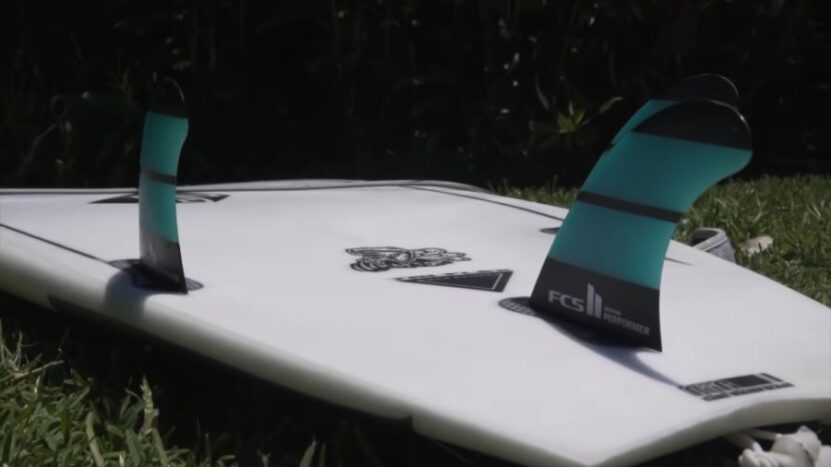
Advanced surfers, with their perfected techniques, opt for smaller boards that offer the highest degree of maneuverability. These boards are typically 5 to 7 feet long, depending on the surfer’s preference and the type of waves they’re riding.
However, it’s crucial to remember that there is no one-size-fits-all approach to surfboard sizes for advanced surfers. The choice largely depends on your personal style, the wave conditions, and your specific performance goals.
| Surfer Level | Recommended Surfboard Sizes |
|---|---|
| Beginner | 7’0″ – 9’0″ |
| Intermediate | 6’0″ – 8’0″ |
| Advanced | 5’0″ – 7’0″ |
Understanding Surfboard Volume
Volume, expressed in liters, is a key factor that determines how well your surfboard will float you. In simple terms, a board with a higher volume will be more buoyant, making it easier to paddle and catch waves. As a general rule, beginners should look for boards with a higher volume, while more experienced surfers can handle boards with less volume.
A popular rule of thumb is your weight (in kg) plus 40 equals your beginner board volume (in liters). For example, if you weigh 60kg, aim for a board volume of 100 liters. But as with all rules of thumb, there are exceptions and other factors to consider, such as your physical condition and skill level.
The Role of Fitness Level and Age

Your fitness level and age can also play a significant role in determining the right surfboard size for you. If you’re physically fit and active, you may find it easier to balance on and maneuver a smaller board. Similarly, younger surfers often prefer smaller, more agile boards.
But remember, fitness doesn’t trump skill level when choosing a board. A beginner, regardless of their fitness level, will generally do better with a larger, more stable board.
The Impact of Wave Conditions
The type of waves you plan to surf on can also influence the size of the surfboard you need. For small or mushy waves, a larger, longer board with more volume can help you catch more rides. On the other hand, for steep, fast, or large waves, a smaller, narrower board will offer better control and maneuverability.
While having a quiver of different-sized boards for various wave conditions would be ideal, it’s not a feasible option for everyone. Therefore, you should choose a size that matches the typical conditions where you’ll be surfing most of the time.
Factoring in the Surfboard’s Shape
While size is essential, the shape of a surfboard – the nose, tail, rocker, and fins – significantly affects its performance. A fish surfboard, despite being shorter, will be easier to ride than a shortboard because of its wide, flat design.
When choosing a surfboard, it’s not just about the length, width, or thickness alone but how these elements work in conjunction with the overall shape and design of the board.
Using Online Surfboard Size Charts
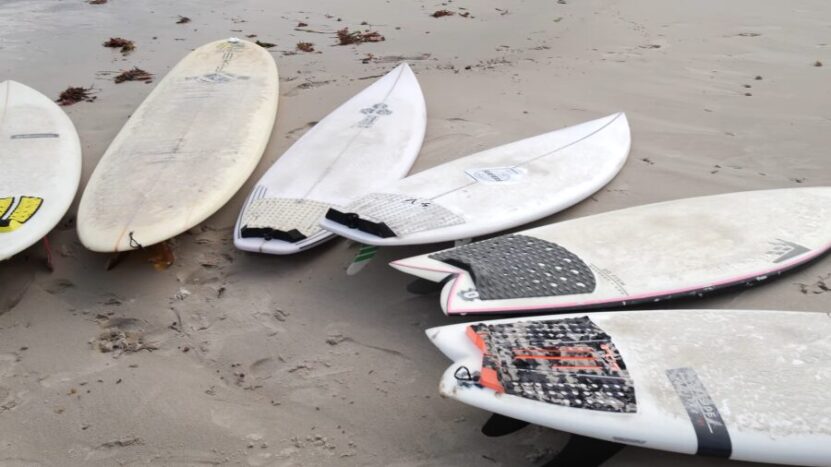
Many surfboard manufacturers and surf shops provide online size charts that recommend surfboard sizes based on your weight and skill level. These charts can be a useful starting point, especially if you’re buying your first board.
However, take these recommendations as guidelines rather than hard rules. Nothing beats the advice of a knowledgeable surf shop employee or the experience of trying out different boards yourself.
Experimentation is Key
The only foolproof way to find the perfect surfboard size for you is through experimentation. Try different sizes and shapes, see what feels comfortable, and observe what enhances your performance. This process might be time-consuming, but the reward of finding the perfect board is worth it.
It’s also worthwhile to consult with more experienced surfers or a professional surf coach. Their experience and observations can provide valuable guidance on the board that best suits your surfing style and goals.
Making Sense of the Surfboard Industry’s Terms
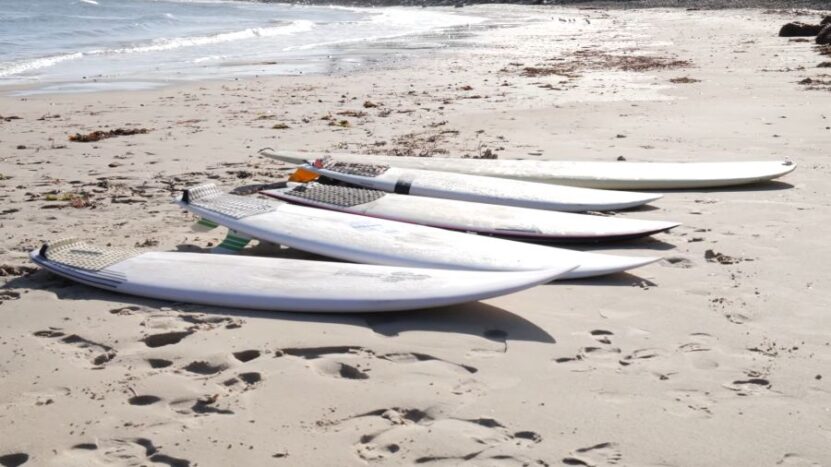
The surfboard industry often uses its own jargon, which can make choosing a board seem even more daunting. You might see surfboards described as “funboards,” “hybrids,” “fish,” or “guns,” each with its own typical range of sizes and intended use.
While it’s not necessary to become an expert in these terms, understanding the basics can make the process of choosing a surfboard size less intimidating.
The Impact of Price and Availability
Price and availability can also influence your choice of surfboard size. Larger boards are often more expensive due to the increased amount of material used. However, these boards may also be more readily available, especially in rental shops, which cater mainly to beginners.
While it’s crucial to stay within your budget, remember that investing in the right board can greatly enhance your surfing experience and progress.
Considerations for Children and Teens
Children and teens, due to their smaller size and weight, will need smaller surfboards. As they grow and improve their skills, they can transition to larger boards. When choosing a board for a child or teen, it’s important to ensure the board is not too heavy for them to carry and maneuver in the water.
The recommended starting size for children is typically a board that is about 2 feet taller than their height. As they improve, they can transition to boards 1 foot taller than their height.
Wrapping It Up
While size is a critical factor in choosing the right surfboard, it’s not the only one. Your skill level, the wave conditions, the board’s shape and design, and your personal preferences also play significant roles. So, take your time, do your research, and most importantly, have fun in the process!

